
NAJAF, IRAQ — Persian script laces and flows across the walls of Najaf's seminaries.
Shiite Muslim religious scholars in the ancient city's turquoise-tiled edifices bury their noses in Koranic texts illustrated with Persian calligraphy, in scenes that evoke Mesopotamia's rich history. For centuries, Najaf has been a key shrine city and center of worship for much of Iraq's people. But for centuries, Iraq's Ottoman and Arab rulers rarely considered Najaf part of their own history. It was always considered a troublesome outpost of the enemy: Iran.
They were right, for the most part. Historically and culturally, Najaf has long been under Persia's sway. But so has much of Iraq. The reading of the Koran in this country differs from the rest of the Muslim world: The rhythm and cadence of Sunnis are unique to Iraq and the Shiites' are unique to Iran. Persian dishes such as fesenjan, a pomegranate stew, are a standard part of Mesopotamian fare. Even this nation's capital carries a Persian name, Baghdad.
The sectarian nature of the war between Shiite and Sunni Arabs in Iraq reflects a centuries-old battle between Persia and the Arab world. It is a point often misunderstood by U.S. policymakers and ground commanders, who perceive the reemergence of Persian influence among Iraq's newly powerful Shiite Muslim majority as proof of meddling by the regime in Tehran.
Rising Persian influence is a sign of Iraq's ascendance, not Iran's. "Iraq has been part of the Persian sphere of influence for more than 400 years," said Karar Dastour, an Iraqi Shiite intellectual who lives in southern Tehran and travels to Iraq. "But governments have always tried to crush anything that had the scent of Shiism or Iran. They were never accepted."
Violent Sunni Arab rejection of Iraq's Persian roots plays out daily on the streets of the capital. In February, three bombs went off in the Shorja market in central Baghdad, killing more than 70 people. It was the fifth time the place, whose name means "salty well" in Persian, was struck in less than a year. Shiite Muslims were the intended targets, but so too was a landmark established long ago by Iranian merchants. When saboteurs blew up the Golden Mosque in Samarra last year, an attack widely viewed as the accelerant of the current civil war, they destroyed the handiwork of Iranian artisans.
In their Internet postings, Sunni Arab insurgents, many of them officers during the Iran-Iraq war of the 1980s, describe their attacks on Shiites as settling accounts with "Safavids," a reference to the 16th century dynasty that embraced Shiite Islam as the official religion of Persia. Shiite Safavids and Sunni Ottomans fought for decades in a conflict that infused sectarianism into what had been a centuries-old ethnic and political conflict between Arabs and Persians."
There has always been conflict between the Arabs and Iranians, and they always tried to involve Iraq," Sheik Humam Hamoodi, an Iraqi Shiite politician and cleric who lived in Tehran during Saddam Hussein's rule, said in an interview last year. "Both have wanted to use Iraq as the trench for their battles."
Ignoring the protests of many Shiites, the British forces who forged modern-day Iraq after the defeat of the Ottoman Empire placed a Sunni Arab tribal leader at the country's helm. They dismissed the quarrelsome Shiite clerics as Iranian-backed interlopers in their plans to create an Iraq dominated by Sunni Arabs.
Shiite Muslim religious scholars in the ancient city's turquoise-tiled edifices bury their noses in Koranic texts illustrated with Persian calligraphy, in scenes that evoke Mesopotamia's rich history. For centuries, Najaf has been a key shrine city and center of worship for much of Iraq's people. But for centuries, Iraq's Ottoman and Arab rulers rarely considered Najaf part of their own history. It was always considered a troublesome outpost of the enemy: Iran.
They were right, for the most part. Historically and culturally, Najaf has long been under Persia's sway. But so has much of Iraq. The reading of the Koran in this country differs from the rest of the Muslim world: The rhythm and cadence of Sunnis are unique to Iraq and the Shiites' are unique to Iran. Persian dishes such as fesenjan, a pomegranate stew, are a standard part of Mesopotamian fare. Even this nation's capital carries a Persian name, Baghdad.
The sectarian nature of the war between Shiite and Sunni Arabs in Iraq reflects a centuries-old battle between Persia and the Arab world. It is a point often misunderstood by U.S. policymakers and ground commanders, who perceive the reemergence of Persian influence among Iraq's newly powerful Shiite Muslim majority as proof of meddling by the regime in Tehran.
Rising Persian influence is a sign of Iraq's ascendance, not Iran's. "Iraq has been part of the Persian sphere of influence for more than 400 years," said Karar Dastour, an Iraqi Shiite intellectual who lives in southern Tehran and travels to Iraq. "But governments have always tried to crush anything that had the scent of Shiism or Iran. They were never accepted."
Violent Sunni Arab rejection of Iraq's Persian roots plays out daily on the streets of the capital. In February, three bombs went off in the Shorja market in central Baghdad, killing more than 70 people. It was the fifth time the place, whose name means "salty well" in Persian, was struck in less than a year. Shiite Muslims were the intended targets, but so too was a landmark established long ago by Iranian merchants. When saboteurs blew up the Golden Mosque in Samarra last year, an attack widely viewed as the accelerant of the current civil war, they destroyed the handiwork of Iranian artisans.
In their Internet postings, Sunni Arab insurgents, many of them officers during the Iran-Iraq war of the 1980s, describe their attacks on Shiites as settling accounts with "Safavids," a reference to the 16th century dynasty that embraced Shiite Islam as the official religion of Persia. Shiite Safavids and Sunni Ottomans fought for decades in a conflict that infused sectarianism into what had been a centuries-old ethnic and political conflict between Arabs and Persians."
There has always been conflict between the Arabs and Iranians, and they always tried to involve Iraq," Sheik Humam Hamoodi, an Iraqi Shiite politician and cleric who lived in Tehran during Saddam Hussein's rule, said in an interview last year. "Both have wanted to use Iraq as the trench for their battles."
Ignoring the protests of many Shiites, the British forces who forged modern-day Iraq after the defeat of the Ottoman Empire placed a Sunni Arab tribal leader at the country's helm. They dismissed the quarrelsome Shiite clerics as Iranian-backed interlopers in their plans to create an Iraq dominated by Sunni Arabs.
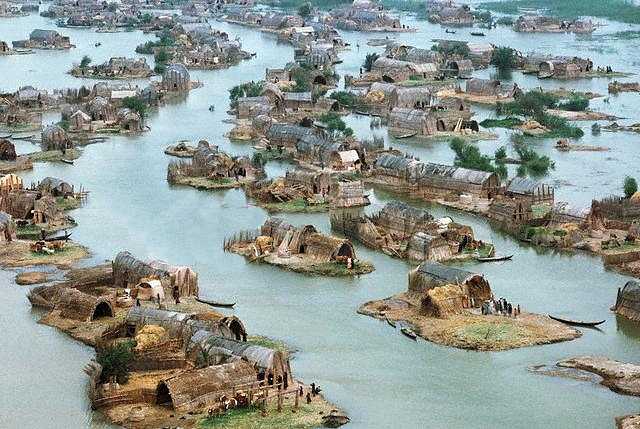
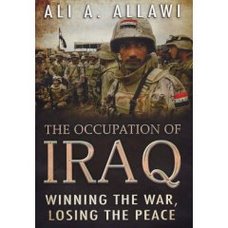
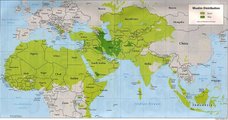
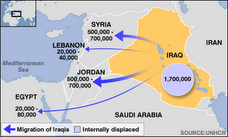
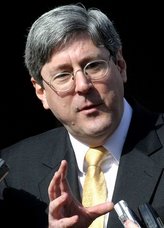
No comments:
Post a Comment